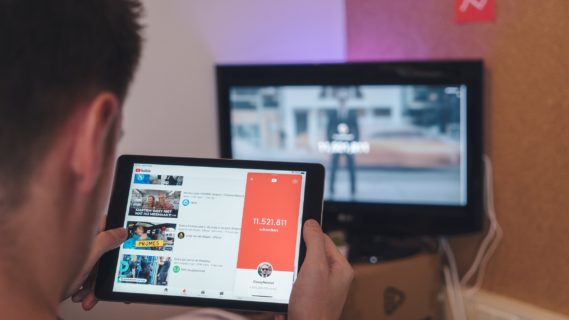
On September 15, 2022, at precisely 1:42:42 am, Eastern Standard Time, Ethereum executed The Merge process with its two cryptocurrency chains. It was without question one of the most significant internet events in recent years, with a wide range of implications for creators and owners of artistic and intellectual property.
The news – admittedly highly technical in nature – went practically unnoticed at the time, even though the Ethereum blockchain accounts for roughly 80% of the non-fungible tokens (NFTs) in circulation today for marketing, distributing rights, and authenticating ownership of original works in the culture and arts field.
In fact, Ethereum was originally designed for the express purpose of making it easier to build and deploy smart contracts and decentralized apps that might lead to the creation of decentralized autonomous organizations (DAOs) to manage the work of creative communities. Key players in film, television, videogames, immersive experiences, and other sectors that combine multiple talents to produce a single work are already exploring the possibilities associated with DAOs.
Although the cryptocurrency environment went through a very rough patch in 2022, with the collapse in non-fungible token trading volume over several months, total sales for the year still exceeded US$50 billion.
So this is not a simple spinoff or passing fad.
WHY THE MERGE MATTERS
The Merge process has several objectives for the Ethereum blockchain. Structurally, however, the most notable resulting change was the changeover from a proof-of-work block validation system to a proof-of-stake system.
What this means in practice is that instead of 360-degree rivalry among blockchain miners – a system that has made cryptocurrencies particularly vulnerable to criticism for their enormous energy consumption – the proof-of-stake system restricts the right to validate blocks to network players who can explicitly supply “proof” of their commitment to the blockchain. In the specific case of Ethereum, the requirement is set at 32 ETH staked as collateral, or about US$55,000.
The direct consequence of this transition is a 99.5% reduction in the energy required to validate the blockchain – a miniscule environmental footprint compared to Bitcoin and other currencies that still rely on a proof-of-work system. Committed artists and producers who know and care about their work’s environmental impact can now pursue a “net zero” energy goal by building their networks on the Ethereum blockchain.
EVOLVING TOWARD EVEN GREATER ECONOMY
Besides a smaller environmental footprint and reduced negative externalities, the migration from proof-of-work to a proof-of-stake system has significantly lessened the cost of inputs that validators employ to secure the blockchain.
In terms of the actual size of the network, the changeover from vast numbers of miners to a much smaller number of validators (fewer than 500,000 addresses are now recognized as valid) has substantially reduced hardware needs. Forbes magazine estimates that The Merge has already rendered some US$4 billion worth of hardware owned by miners operating under the former proof-of-work system obsolete.
This development has not yet brought about significant changes in operating costs on the platform itself, which is still grappling with prioritization problems and clogged networks, which can at times justify the higher usage fees charged to network participants.
Migration to a proof-of-stake system also sets the stage for an upcoming development called sharding, which should significantly boost processing capacity on the blockchain while reducing transaction costs for users. For example, implementation of the sharding system could increase the number of validated transactions from 15 per second to more than 100,000 – about five times the volume of the transactions processed by VISA.
With increased competition from new currencies like Solana, already regarded favourably by the Bank of America in a recent research note, it looks like lower transaction costs must be on Ethereum’s strategic roadmap.
THE MORE YOU UNDERSTAND THE BETTER YOU’LL BE
One thing is certain: the creative field will have to reposition itself in light of these socio-technical developments. As the Norton Rose Fulbright global law firm has pointed out, monetization of intellectual property and its protection against illegitimate use via crypto-digital tools is now a concern for all businesses, especially rightsholders of original works.
The blurring of the lines between digital and physical forms of certain works will force all concerned to explore what major developments like The Merge, transaction costs, and relatively secure cryptocurrencies will mean to Canadian creators in all fields and whether it’s an opportunity or a threat for them in the years ahead.
SOURCE: CMF-FMC